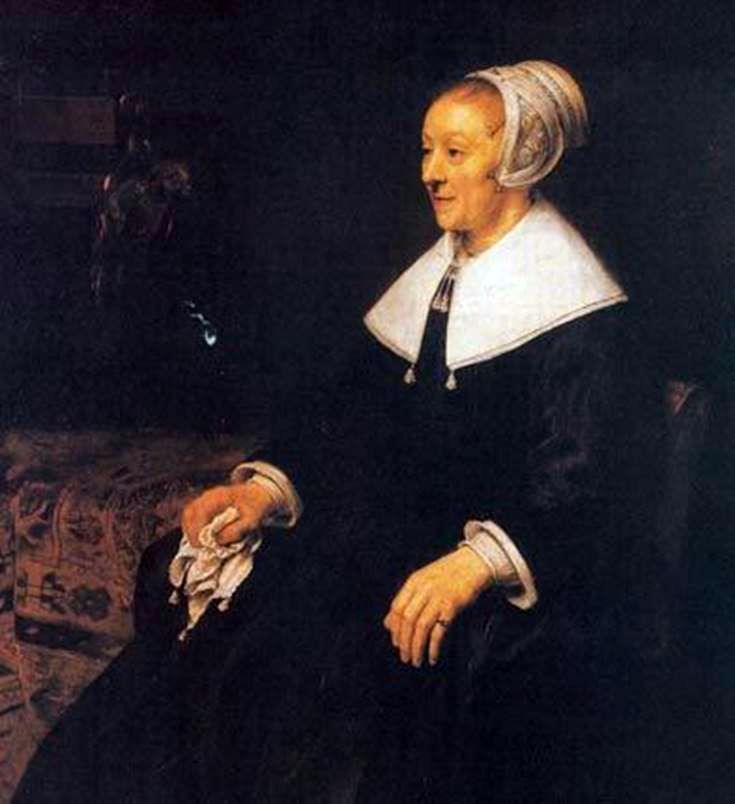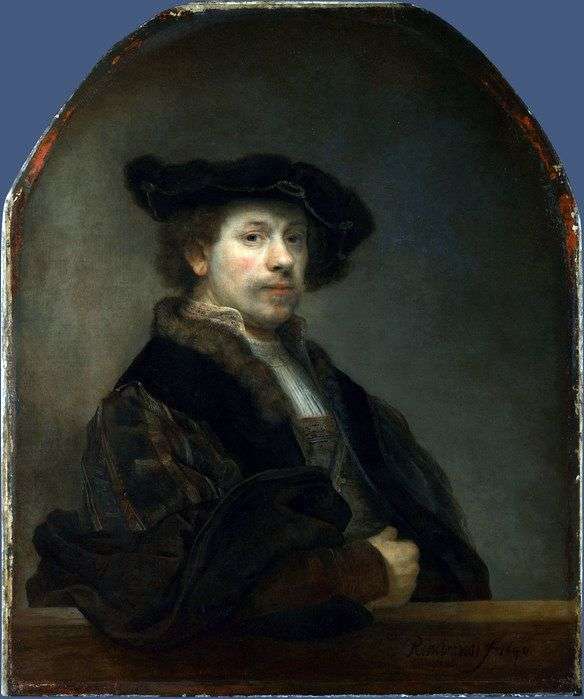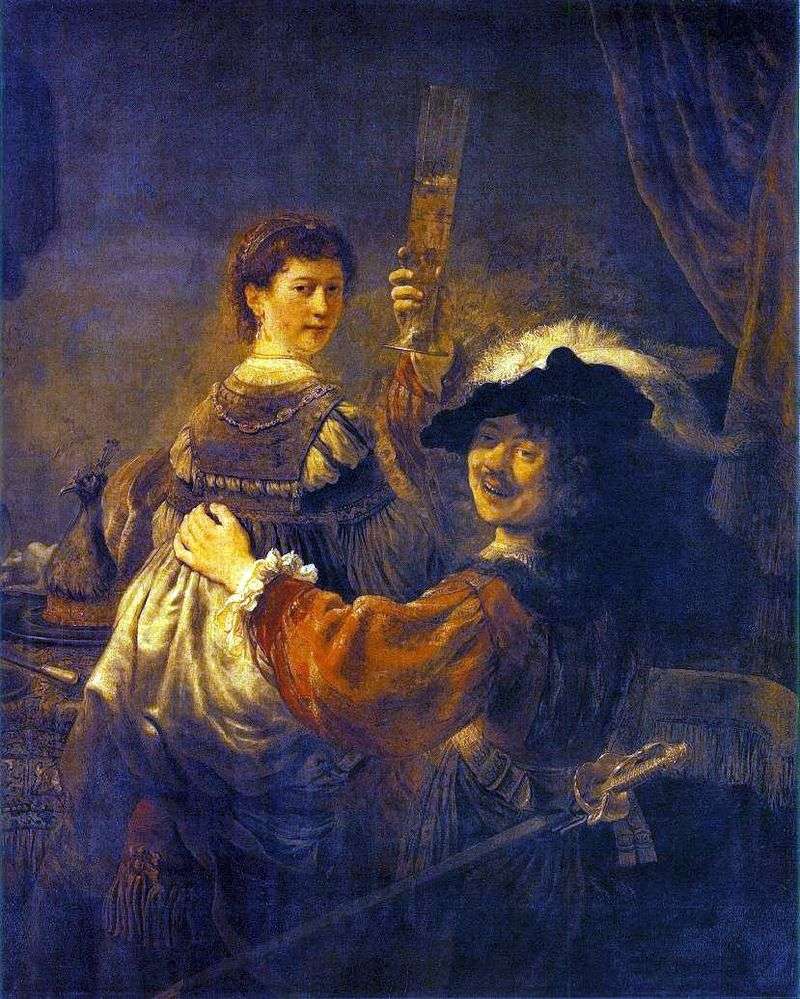
WRITTEN in the ill-fated year, when all the property of Rembrandt was sold by auction, this excellent portrait is a tribute to the early portrait style of the 30s; it is completely finished, every detail is written out.
When compared with the “Portrait of Jan Sixs”, the strengths of two largely different techniques are striking; Rembrandt owned both masterfully. Katrina Hoogsat – here she is about fifty – was the dyer’s wife. Perhaps more significant, it belonged to the Mennonite sect, among which the artist had such extensive connections that it would not be an exaggeration to say: Rembrandt was deeply interested in their teaching. Those who did not adhere to such strict rules as the Calvinists who had the power, the Mennonites, in their way of life and conviction, resembled Quakers.
However, of course, there could be no question of Rembrandt, “living in sin” with a woman in marriage, joining this sect. By virtue of either religious beliefs, or personal qualities, Katrina is struck by the rare calmness of spirit and enlightenment, which is not often seen on the faces of richer and more respectable customers of Rembrandt.
 Retrato de Katrina Hoogsat – Rembrandt Harmens Van Rhine
Retrato de Katrina Hoogsat – Rembrandt Harmens Van Rhine Portrait de Katrina Hoogsat – Rembrandt Harmenszoon Van Rijn
Portrait de Katrina Hoogsat – Rembrandt Harmenszoon Van Rijn Hendrickje by the window by Rembrandt Harmens Van Rhine
Hendrickje by the window by Rembrandt Harmens Van Rhine Portrait of Saskia as Flora by Rembrandt Harmens Van Rhine
Portrait of Saskia as Flora by Rembrandt Harmens Van Rhine Portrait of a Scientist by Rembrandt Harmens Van Rhine
Portrait of a Scientist by Rembrandt Harmens Van Rhine Self Portrait in Velvet Beret by Rembrandt Harmens Van Rhine
Self Portrait in Velvet Beret by Rembrandt Harmens Van Rhine Self Portrait at the Age of 34 by Rembrandt Harmens Van Rhine
Self Portrait at the Age of 34 by Rembrandt Harmens Van Rhine Fun Society (Self-Portrait with Saskia on Your Lap) by Rembrandt Harmens Van Rhine
Fun Society (Self-Portrait with Saskia on Your Lap) by Rembrandt Harmens Van Rhine